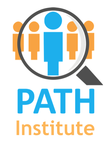Independently Healthy: Q7 Involvement in family health
Level: Somewhat high
Question: q7
Core statement: I like being the one to decide where we get our family healthcare
Response: Somewhat agree
Intrinsic Motivation: I’m the one most prepared to make health care decisions for family members in most cases. I tend to prefer doing it.
Recommendations: Customers like these tend to be more focused on their family's health rather than their own health, so the advertiser must direct benefits to family members. Message themes should emphasize the importance of fulfilling responsibility for a family's health. Message themes should also stress the importance of keeping the family in top physical and nutritional form.
Themes: Visual cues should place heavy emphasis on spouses or other family members, especially small children. Auditory cues should include the sound of children or the presence of a spouse. The individual can be portrayed as reading up on the latest family health trends, or shown with subscriptions to popular family magazines. The caregiver should be seen as deriving enjoyment and fulfillment from the role of healthcare decision-maker.
Further considerations:
Appeal style: Utilitarian (focus on use and benefits that would benefit the family or person responsible for family health decisions)
Repetitions: Low repetitions
Durations: Long duration messages
Complexity: Broad based information
Content emphasis: Product/service performance and benefits
Primary medium: Print and Internet
Fear appeals: Refrain from using fear appeals
Humor: Refrain from using humor
Explicit conclusions: Let customer draw conclusions
Type of argument: One-sided argument on importance of family health (I'm the one who makes health care decisions for my family because it’s a priority for me)
Authority appeals: Medical authority figure or peer testimonial if confidence in medical professionals is low
Spokesperson: Expert spokesperson (experienced peer or family health expert, or a celebrity associated with family)
Level: Somewhat high
Question: q7
Core statement: I like being the one to decide where we get our family healthcare
Response: Somewhat agree
Intrinsic Motivation: I’m the one most prepared to make health care decisions for family members in most cases. I tend to prefer doing it.
Recommendations: Customers like these tend to be more focused on their family's health rather than their own health, so the advertiser must direct benefits to family members. Message themes should emphasize the importance of fulfilling responsibility for a family's health. Message themes should also stress the importance of keeping the family in top physical and nutritional form.
Themes: Visual cues should place heavy emphasis on spouses or other family members, especially small children. Auditory cues should include the sound of children or the presence of a spouse. The individual can be portrayed as reading up on the latest family health trends, or shown with subscriptions to popular family magazines. The caregiver should be seen as deriving enjoyment and fulfillment from the role of healthcare decision-maker.
Further considerations:
Appeal style: Utilitarian (focus on use and benefits that would benefit the family or person responsible for family health decisions)
Repetitions: Low repetitions
Durations: Long duration messages
Complexity: Broad based information
Content emphasis: Product/service performance and benefits
Primary medium: Print and Internet
Fear appeals: Refrain from using fear appeals
Humor: Refrain from using humor
Explicit conclusions: Let customer draw conclusions
Type of argument: One-sided argument on importance of family health (I'm the one who makes health care decisions for my family because it’s a priority for me)
Authority appeals: Medical authority figure or peer testimonial if confidence in medical professionals is low
Spokesperson: Expert spokesperson (experienced peer or family health expert, or a celebrity associated with family)
